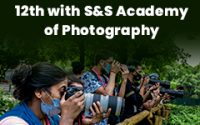What Question Basic Photography Certificate Courses helps you Answer?
Enrolling in basic photography certificate courses is just what you need if you want to develop a workflow to take your images to the next level.

Why… Because, no matter how talented a photographer one is, they didn’t start as one. Camera settings, composition, light, and post-processing all take time and effort to perfect, and learning directly from an expert is a fantastic method to do it.
Below we explain what three questions a course can help you answer and how it helps you create an ideal workflow for your process.
It helps you answer what gear to use?
Great images are created by the photographer, not by the equipment. However, gear does make a significant difference, and comprehending the arrangement from other photographers, both amateurs and professionals, whom you encounter during the course, can help you in two ways:
First: It gives you guidance for your gear. After all, if a photographer you liked uses a particular lens and produces learning what makes it work, it will help you create an ideal kit for you.
Second: It will show you how to figure out what gear you’ll need for various genres of photography. It’s more about determining which gear best meets your preferences and requirements.
It also explains why your favorite photographer uses the lenses that he or she does. And what makes certain lenses superior to others.
A talented photographer can create shots with any lens, but focal length, maximum aperture, auto focusing speed, and other factors as accessories can all have an impact on your photos.
There’s probably a lot more than one would care to confess.
Accessories, on the other side, are often quite useful and underappreciated, therefore you also learn about tripods, tripod heads, filters, flashes, camera cases, and even rain covers.
it helps you answer what setting matters?
Some photographers are picky about their settings, while others like to leave everything on Auto and concentrate on lighting, composition, and post-production. Learning what settings matter where, from some basic photography certificate courses is an important step toward mastering the art of photography.
These settings might include:
• Image formats (e.g., RAW vs. JPEG)
• Aspect ratio of the image
• The aperture
• Speed of the shutter
• ISO 9001:2008
• Correcting the white balance
• Modes of focusing
• Area modes for AF
• Image style
• Customization of buttons
It helps you answer what post-processing workflow is the best?
Post-processing is essential for a nice output, but it may be intimidating for novices – so if you’re having trouble with it, this course is a great place to start.
You might begin by determining the program that the photographer employs, but you should then investigate deeper. Discover how to use various tools and techniques. What is the color grade? Is it possible for them to dodge and burn? Etc. In other words, how do they create an image from start to finish? What does the process entail?
Conclusion
We at Shoots & Shoots academy hope you can understand how basic photography certificate courses will assist you in creating a beautiful photography workflow. Which gear, specifically, should you choose? Where does the setting matter? Finally, how can you use software post-processing to bring your work to a conclusion?
Hopefully, you’ve been motivated and are eager to continue your education.
Keep in mind that even the best photographers in the world were once novices. Continue to learn. Participate in one of our classes as early as you can; Shoots & Shoots Academy awaits your arrival.




